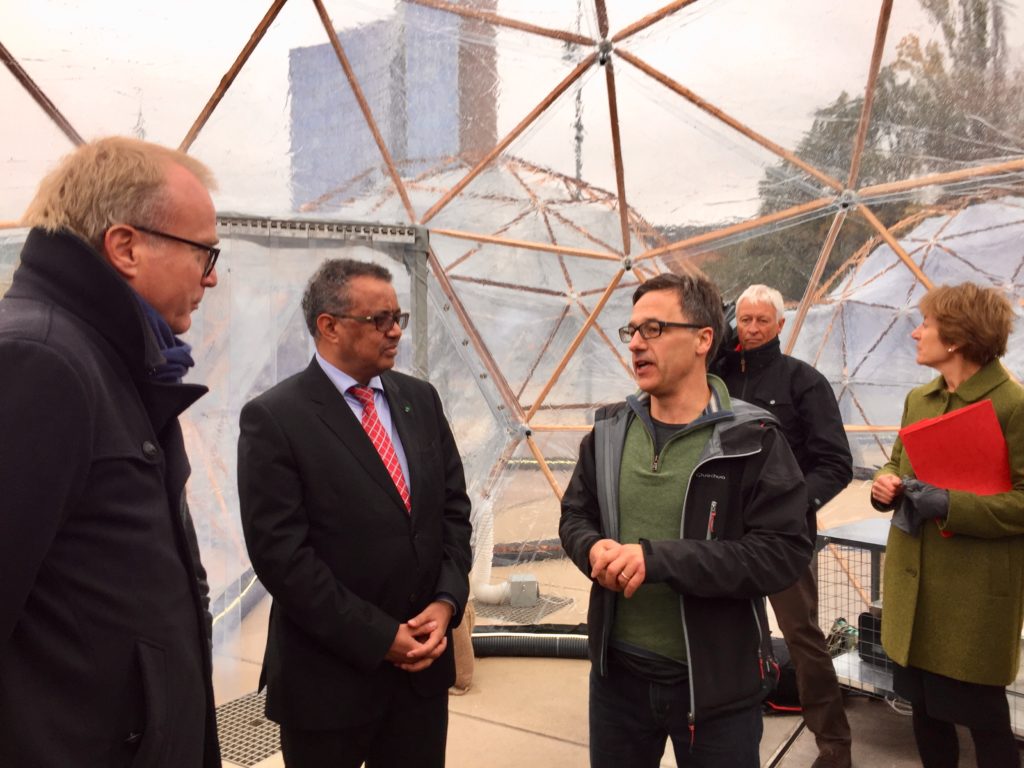An iconic art installation in central Geneva offering doses of the air in five different locations was launched today in Geneva, a day ahead of the first World Health Organization Global Conference on Air Pollution and Health.
Pollution Pods, by artist Michael Pimsky, has travelled from its first home in Somerset Place in London to central Geneva to give conference attendees and the public an immersive experience of simply breathing in New Delhi, Beijing, London, Sao Paulo, and the pristine Tautra island of Norway.
The artist describes it as, “a sort of wine tasting experience, rather than a comparison (between cities)”.
“I would like that when you come, you spend 20 to 25 minutes in each pod,” he suggests.
The smog in the New Delhi dome most visibly engulfs its occupants, but all pods have an individual character– each is based on a distinct scent that was designed to closely mimic that city’s air, such as diesel emissions in London and emissions from combusting ethanol in Sao Paulo, for example.
“One of the hardest things when dealing with air pollution is that it is often invisible, and because we can’t see it, it is hard for us to take it seriously,” said WHO Director-General Dr Tedros Adhanom Ghebreyesus at the launch.
“These pods standing here in Place des Nations in Geneva make that easier,” he said.

WHO’s Director-General Dr Tedros Adhanom Ghebreyesus with Pollution Pod artist Michael Pimsky.
Air pollution is a near-universal way of life in our current reality: 9 in 10 people around the world breathe polluted air. It is also the biggest environmental risk to health.
Outdoor air pollution in both cities and rural areas causes 4.2 million premature deaths worldwide.
It is the second leading cause of non-communicable diseases, after tobacco, responsible for almost a third of deaths from lung cancer, almost a quarter of deaths from stroke and heart disease each, and over 40 per cent of deaths from lung disease.
It also exacts an economic cost in premature deaths and disease to the tune of potentially trillions of dollars worldwide, an estimated $1.6 trillion in Europe alone.
Ministers of health, city mayors, policymakers, scientists and civil society are expected to discuss these issues at the conference.
Read more from the World Health Organization: How air pollution is destroying our health